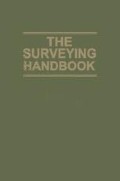Abstract
After all phases of surveying, mapping, and other related activities are completed, individuals who are engaged in surveying and mapping sciences may find that their work is just commencing. Whether the individuals conducted a boundary survey, a building stakeout, or prepared a topographic or planimetric map, the product may be questioned by the client or by a third party who had no pecuniary interest in the original job. As a result, professionals may be embroiled in a legal action, either as a party or as a witness defending their work for the client or explaining their actions. In either situation, their professional qualifications and capabilities will be questioned and “hung out to air” for all to see and to evaluate.
Access this chapter
Tax calculation will be finalised at checkout
Purchases are for personal use only
Preview
Unable to display preview. Download preview PDF.
Notes
Federal rules of civil procedure, Rule 3
Black’s law dictionary (St. Paul, Minn.: West, 1968).
W. Barthold, Attorney’s guide to effective discovery techniques (N.J.: Prentice-Hall, 1968), p.
Ibid., p. 88.
Ibid., pp. 112–118.
J. Gelin, and D. W. Miller, The federal law of eminent domain (Charlottesville, Va.: Michie, (1982)
Ibid., p. 371.
J. W. McElhaney, Trial notebook (Chicago: American Bar Association, 1981), chap. 3.
F. L. Bailey, The defense never rests ( New York: New American Library, 1971 ), p. 25.
R. A. Givens, Advocacy ( Colorado Springs, Colo.: McGraw-Hill, 1980 ), p. 216.
J. W. McElhaney, Trial notebook, p. 107.
Ibid.
Bailey, The defense never rests, p. 25.
Givens, Advocacy, p. 216.
McElhaney, Trial notebook, p. 107.
Ibid.
Editor information
Editors and Affiliations
Rights and permissions
Copyright information
© 1987 Springer Science+Business Media New York
About this chapter
Cite this chapter
Robillard, W.G. (1987). Courtroom Techniques. In: Brinker, R.C., Minnick, R. (eds) The Surveying Handbook. Springer, Boston, MA. https://doi.org/10.1007/978-1-4757-1188-2_32
Download citation
DOI: https://doi.org/10.1007/978-1-4757-1188-2_32
Publisher Name: Springer, Boston, MA
Print ISBN: 978-1-4757-1190-5
Online ISBN: 978-1-4757-1188-2
eBook Packages: Springer Book Archive

